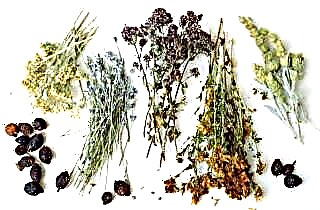 Symptoms of tracheitis in children at the initial stage can manifest themselves in varying intensity, depending on the aggressiveness of the provoking factor and the resistance of the immune system.
Symptoms of tracheitis in children at the initial stage can manifest themselves in varying intensity, depending on the aggressiveness of the provoking factor and the resistance of the immune system.
Tracheitis in children can be divided into infectious and non-infectious. The first group includes:
- viral pathogens, for example, parainfluenza, adenovirus, coronavirus, which can lead to epidemics, damage to the digestive system, as well as the lower respiratory tract;
- bacteria, such as streptococci, staphylococci, haemophilus influenzae, whose intensive reproduction is fraught with the development of meningitis, purulent otitis media or sinusitis;
- mixed infection, when, against the background of ARVI, children have signs of bronchitis with purulent sputum, which indicates the addition of a bacterial infection.
Tracheitis in a child of non-infectious origin can develop for the following reasons:
- unfavorable living conditions. This applies to humid, cold and dusty rooms, which, on the one hand, leads to hypothermia, and on the other, to irritation of the respiratory tract mucosa with polluted air. This group also includes children whose parents often smoke in their presence;
- abuse of cold foods and drinks;
- allergic reactions that develop after contact with allergens. These can be animals, more precisely their wool, pollen, fluff, chemicals, care products, food or medicine.
The predisposing factors include the presence of chronic diseases of the ENT organs, for an exacerbation of which it is enough to wet your feet or stand in a draft.
Symptoms
The main symptom of the disease is cough, but its appearance may be preceded by a short prodromal period. It lasts no more than 1-2 days and is manifested by malaise, body aches, moodiness, drowsiness and decreased appetite. If treatment is not started at this stage, the disease progresses. Further symptoms of tracheitis in a child are:
- hyperthermia, which initially fluctuates at 37.3 degrees with a subsequent increase to 39;
- sore throat, soreness when swallowing;
- chest pain;
- runny nose; dry cough, in the form of attacks, often growing at night, closer to morning.
With viral tracheitis, the patient is worried about a dry cough, hoarseness and rhinorrhea, while the mucus is light. Bacterial inflammation can be suspected by yellow-green sputum with coughing, high fever and severe intoxication.
Tracheitis in children is more often diagnosed before the age of three. Depending on the age, the most characteristic symptoms can be distinguished:
- the newborn child does not cough, but vomiting and regurgitation is observed. Lethargy, moodiness and breast refusal are also noted. On examination of the oropharynx, the mucous membrane may be hyperemic;
- at the age of two years, children are characterized by an unproductive cough, high fever, the risk of inflammation of the larynx and the development of laryngospasm increases;
- preschoolers can rarely cough up their throat, mostly dry cough worries. Attacks are recorded at night; schoolchildren under 12 begin to cough with sputum, intoxication is less pronounced in comparison with children of three years of age;
- children over 12 years of age tolerate tracheitis more easily, while hyperthermia may be absent altogether or be recorded at 37.5 degrees. Productive cough with phlegm.
Tracheitis in a child in an acute form begins sharply with pronounced symptoms. The duration of the disease is up to two weeks. If treatment is not carried out, tracheal cough bothers constantly, but of varying intensity. During periods of remission, the child's condition may be normal, periodically worried about dry cough and sore throat. With an exacerbation, symptoms appear characteristic of the acute phase.
When tracheitis is diagnosed in children, symptoms and treatment should be carefully analyzed by a doctor, because the risk of complications is high:
- pneumonia;
- laryngitis and laryngospasm;
- bronchial asthma (with an allergic course).
What drugs are allowed in childhood?
Treatment of the viral form of tracheitis with antibacterial drugs is ineffective, so parents should not immediately take antibiotics when they notice an increase in temperature.
 Therapy for tracheitis should be compiled exclusively by a doctor in order to protect children from complications. To combat a viral infection, antiviral agents are prescribed that have an immunomodulatory effect. The attending physician may prescribe Remantadin, Novirin, Amiksin, Aflubin, Amizon, Otsilokoktsinum, Tsitovir or Nazoferon. It is possible to cure tracheitis in a child of bacterial genesis with the help of Amoxiclav, Flemoklav, Sumamed, Cefotaxime or Cefuroxime.
Therapy for tracheitis should be compiled exclusively by a doctor in order to protect children from complications. To combat a viral infection, antiviral agents are prescribed that have an immunomodulatory effect. The attending physician may prescribe Remantadin, Novirin, Amiksin, Aflubin, Amizon, Otsilokoktsinum, Tsitovir or Nazoferon. It is possible to cure tracheitis in a child of bacterial genesis with the help of Amoxiclav, Flemoklav, Sumamed, Cefotaxime or Cefuroxime.
Parents should take into account that antibacterial agents kill not only pathogenic microorganisms, but also useful ones.
In this regard, probiotics are prescribed (BioGaya, Linex, Bifidumbacterin) to prevent microflora disturbances.
Now let's take a closer look at how to cure a cough. For this, the following medicines are used:
- antitussive drugs are used for dry cough - Sinekod, Plantain Herbion or Bronholitin;
- expectorant medications help to make bronchial secretions less dense and make it easier to cough up. Ambrobene, ACC or Flavamed. With the phenomena of bronchospasm, Ascoril can be prescribed, which has a bronchodilator effect. Erespal has a pronounced anti-inflammatory effect;
- Ventolin, Berodual - with bronchospasm;
- Pulmicort - if you suspect the development of laryngospasm (hoarseness, shortness of breath, heavy breath).
If a child's temperature exceeds 38 degrees, it is necessary to use antipyretic medications, for example, Panadol or Nurofen.
If you have a sore throat, use sprays or gargles. These include Orasept, Chlorophyllipt, Chlorhexidine, Miramistin, Tantum Verde, Givalex, Rotokan or Ingalipt. If the child knows how to dissolve lollipops, Strepsils, Lizak or Faringosept can be prescribed.
Are inhalation effective?
The effectiveness of inhalations lies in the possibility of providing a therapeutic effect directly in the focus of inflammation. Particles of the medicine, which enter the respiratory tract with steam, reduce the severity of inflammation, edema, hyperemia, bronchospasm, improve the drainage function of the bronchi and facilitate the excretion of sputum.
The easiest way to inhale is with a nebulizer, but not all parents have such a device. There are several options for carrying out the procedure in the absence of a nebulizer:
- you can stay in the bathroom with your child when hot water is drawn into the basin or bathroom and medicinal products are added (soda, essential oils, herbal teas);
- when tracheitis in infants, when bathing, small children can inhale therapeutic vapors if components for inhalation are added to the water;
- at an older age, you can use a container with a medicine over which the child will breathe without covering his head with a towel.
Inhalation and warming procedures (compresses, mustard plasters) are prohibited in case of fever above 37.5 degrees. What is the advantage of a nebulizer?
- the ability to deliver drugs to the alveoli and bronchioles;
- steam scald prevention;
- precise control of the dose of the medication;
- allowed for babies.
What is unacceptable for a nebulizer:
- the use of oil solutions;
- the use of herbal decoctions.
Note that medications must be diluted exclusively with saline, and after the procedure, a thorough cleaning of the apparatus is required. In one session, approximately 4 ml of the prepared medicine is consumed, which is enough for 5-8 minutes of inhalations. How to treat tracheitis with inhalation?
| A drug | Action | Dosage | Notes (edit) |
|---|---|---|---|
| Still mineral water (Borjomi, Essentuki), 0.9% sodium chloride solution | Moisturizing the mucous membrane, reducing its irritation | 4 ml three times a day | The duration of the course is not limited, it can be used for prevention |
| Fluimucil | It dilutes phlegm, accelerates its discharge. | 1 ml of solution is diluted with saline 1: 1 | Duration maximum 5 days. Children over 3 years old. |
| Ambroxol, Lazolvan | Reduces the viscosity of bronchial secretions, activates the excretion of sputum | Up to two years - 1 ml of medicine, older - 2 ml diluted 1: 1 with saline | The duration of the course is up to 7 days. |
| Dekasan | Antimicrobial action | Diluted 1: 2 with saline. For children, 1 ml is enough twice a day. | Up to 5 days |
| Berodual | Expands the bronchi, facilitates breathing and excretion of phlegm | Up to three years - 6 drops per 2 ml of saline, after six years - 10 drops | Used once a day, no more than three days |
| Tussamag | Suppresses the cough reflex | 1: 3 - from 1 year to 5 years old, 1: 2 - over 5 years old | Not used with expectorant drugs |
Inhalation for tracheitis can be carried out at home or in a hospital. With a nebulizer, you can quickly help with laryngospasm and allergic tracheitis using Pulmicort.
 It is a hormonal drug, but it has only a local effect.
It is a hormonal drug, but it has only a local effect.
You can treat tracheitis in children with the help of inhalations with folk recipes:
- decoction of herbs (thyme, plantain, sage, coltsfoot);
- boiled potatoes with the addition of soda;
- essential oils (pine, fir, eucalyptus);
- propolis, beeswax;
- onion garlic;
- soda with iodine.
Physiotherapy procedures
When there is a long-term current tracheitis in children, treatment may include physiotherapy procedures:
- UHF. The electromagnetic field allows for deep warming and antispasmodic effect;
- electrophoresis makes it possible to conduct calcium chloride, potassium iodide through the skin and have a more pronounced therapeutic effect;
- inductothermy has an antispasmodic effect and normalizes the production of bronchial secretions.
With regard to warming procedures, tracheitis in children can be treated with mustard. It can be added dry to socks or a water bath to warm up the feet.
In addition, mustard plasters can be applied by applying them with the inactive side to the skin or on a gauze pad to prevent burns. Parents should not forget about the child's day regimen. Bed rest, abundant warm drink, vitamin food and airing of the room are necessary.
It is impossible to give an unambiguous answer to the question of whether it is possible for a child to walk with tracheitis in winter. You should not go to the street if you still have fever, severe cough and malaise. For the first 5 days, you definitely cannot go out into the cold, then - taking into account the symptoms.



